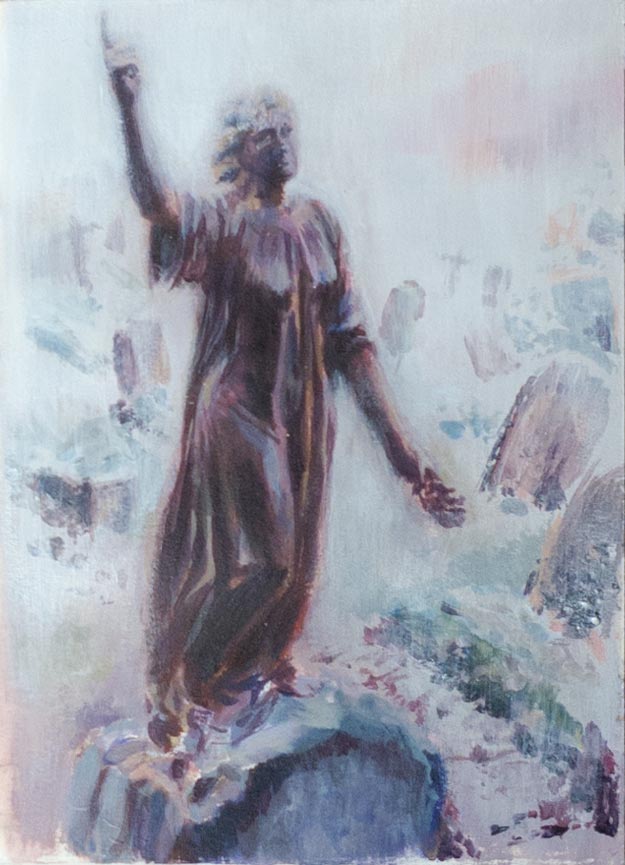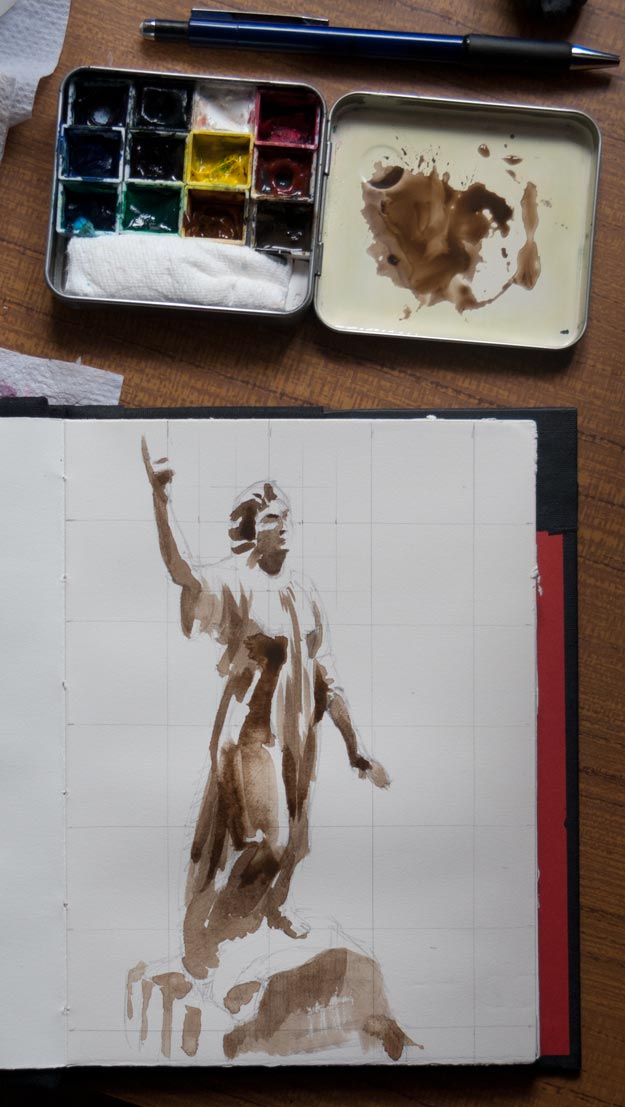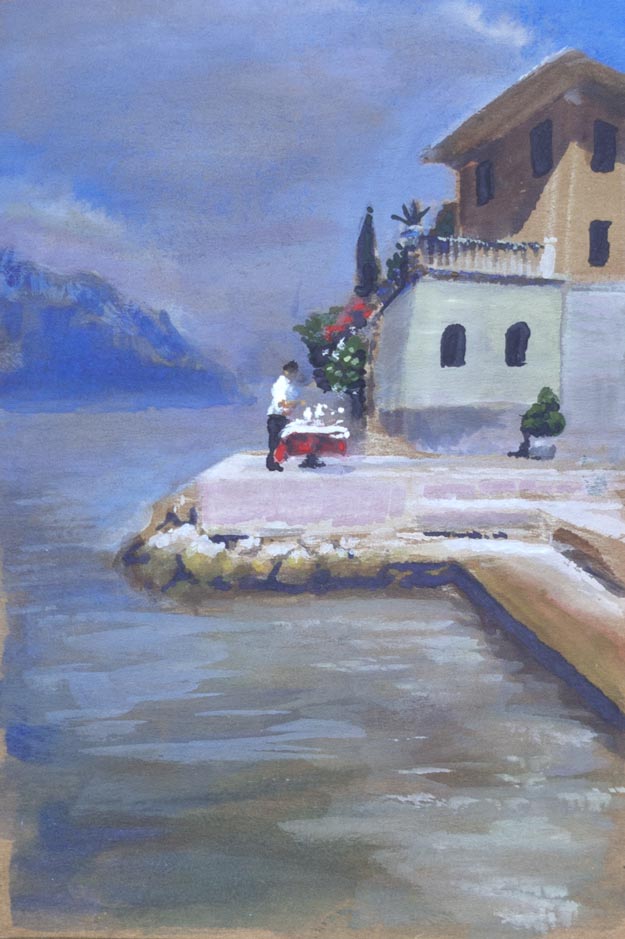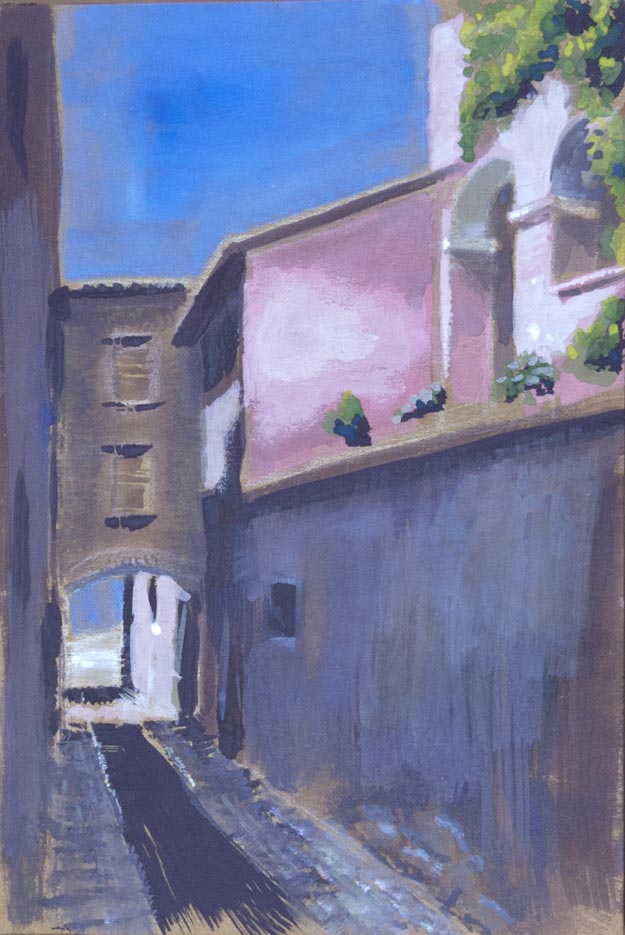

A statue over the grave of Constance Christian Hardyman (died 1892, age 25) in Smallcombe Cemetery in Bath, at least those are the details on the headstone. A search on the internet reveals that “Constance [Trueman] died in Bath in April 1892 after the birth of the couple’s first child, Constance Christian“, but that doesn’t match up with the headstone. As with many of the crumbling, lichen-covered headstones in that cemetery, who knows who lies below.
This was intended to be a figure study but I wanted to get it fairly accurate, so for the lay-in I drew a grid matching one over the photo. A rough watercolour wash was used to get the main dark shapes (using Ed’s homemade watercolour set, made from a converted mint tin with the half pans attached with magnetic tape).
After that it was trial and error with many layers of acrylic paint. The colour choices were based on the mid-winter frost-covered scene with its purples, russets, blue greys and whites.
I couldn’t settle on the background. I wanted it to be roughly true to the original scene rather than just showing a generic graveyard, but it looks rather contrived and gimmicky despite toning it down with white mixed with glazing medium. I think I should do more straightforward studies before getting too painterly like this, and develop skills in colour mixing, values and composition.


